- Author: Kathy Keatley Garvey
Orb-weaver spiders know a thing or two about web design and development.
And their skills have nothing to do with computers.
Have you ever stepped out into your garden in the early morning and seen a spiral or wheel-shaped web glistening with droplets of dew? And encountered the web developer hanging out with its prey?
Such was the case last weekend when we spotted an orb weaver or araneid with its catch, a honey bee. The bee was all wrapped up and ready to eat. Web designers and developers get hungry, too.
Why are they called orb weavers? Well, orb is an old English word meaning "circular."
"The family is cosmopolitan, including many well-known large or brightly colored garden spiders," according to Wikipedia. "With around 3,100 species in 169 genera worldwide, Araneidae is the third-largest family of spiders (behind Salticidae and Linyphiidae). Araneid webs are constructed in a stereotyped fashion. A framework of nonsticky silk is built up before the spider adds a final spiral of silk covered in sticky droplets."
So an unsuspecting honey bee flew into the sticky web, struggled to free itself and could not. And along came a spider and the rest is history. Or breakfast.
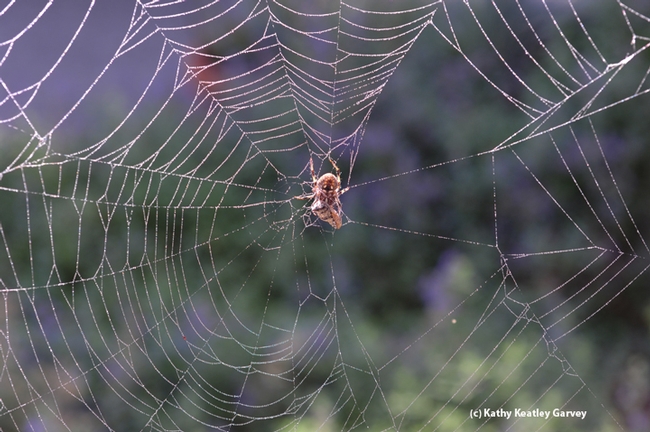
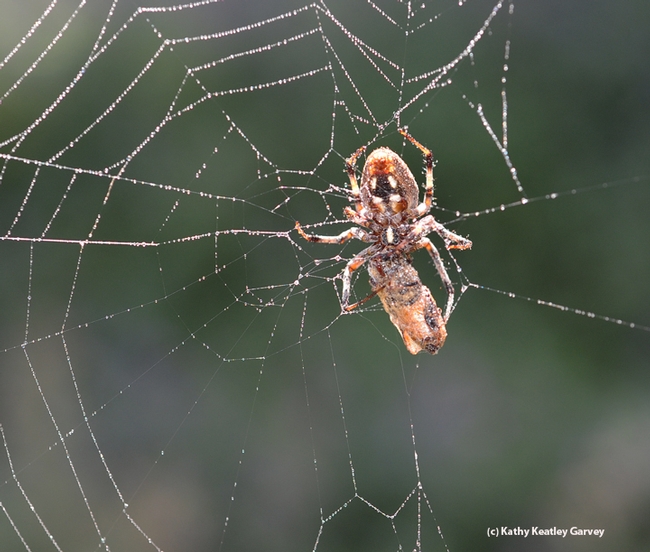
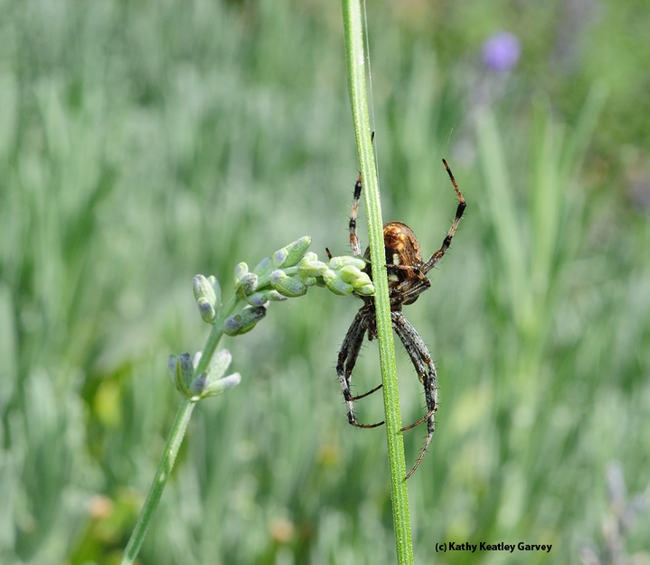
- Author: Kathy Keatley Garvey
A spider web is one of nature's most marvelous wonders. It's art, it's architecture, and it's engineering.
The silk is as beautiful as it is deceiving. It's 10 times stronger than Kevlar; as sticky as cotton candy covered with honey; and as flexible as a classical ballet dancer.
It's also a restaurant of sorts when the sticky strands nab unsuspecting prey. Unlike humans sitting down at a restaurant to order a meal from the menu, a spider never knows what's on the menu until it "magically" appears. It could be a honey bee, sweat bee, carpenter bee, spotted cucumber beetle, ladybug, lacewing, crane fly, another spider or some other critter.
We saw this newly woven wheel web on our front porch this morning. As the sun rose, the web glowed, glistened and glittered. An orbweaver at work..setting the dinner table...
The intricate web made us think of E. B. White's children's novel, "Charlotte's Web." Charlotte, a barn spider, kept writing messages such as "Some Pig" to try to save the life of a pig named Wilbur.
The farmer got the message, but in the real world, the spider's message is not about saving a life, but entrapment.

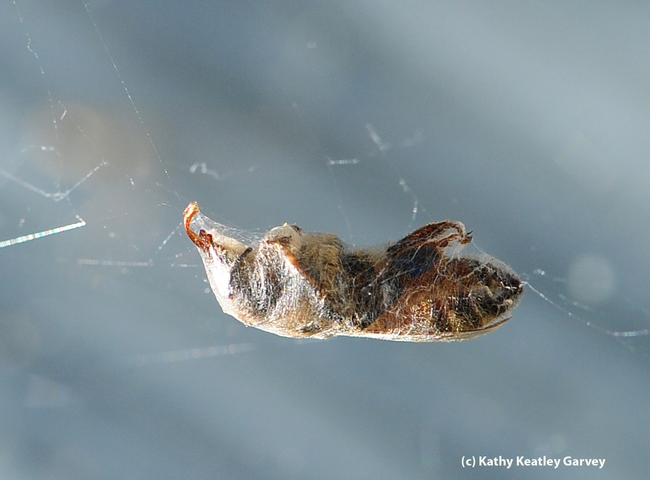
- Author: Kathy Keatley Garvey
Nature's suspension bridge--that's what the spider builds.
With the unseasonable warm weather and crafty spiders at work, can spring be far behind?
Spiders are already building their webs on fruit trees yet to bud and bloom. They're setting traps for the honey bees, carpenter bees, bumble bees, hover flies and other insects sure to arrive.
Such was the case on our nectarine tree the other morning. A suspension bridge with silvery pearls of dew. Too soon. Too cold. Sorry, no insects.
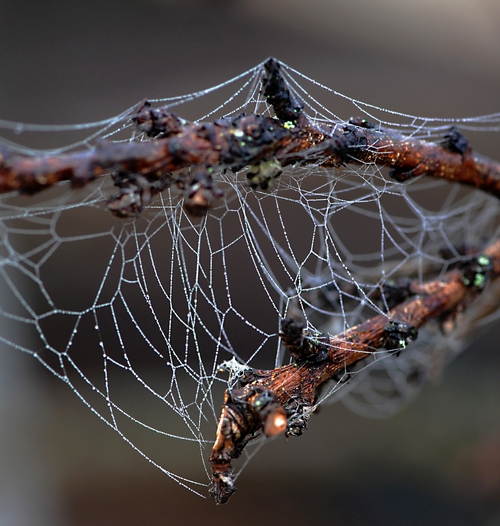
- Author: Kathy Keatley Garvey
When you see a honey bee trapped in a spider web, it's usually dead and about to be consumed.
Not this time.
Today a foraging bee, minding her own "beesiness," was nectaring among the catmint blossoms in our garden when she ran smack dab into a sticky web placed there by a cunning spider.
Tangled in the web and unable to free herself, the honey bee buzzed frantically. It didn't work. She remained trapped, waiting for the spider to return.
Not this time.
Carefully, I lifted the "damsel in distress" from her predatory prison and placed her on a catmint blossom. A sip of nectar for nourishment and off she went.
Sorry, spider. This is a bee friendly garden.




